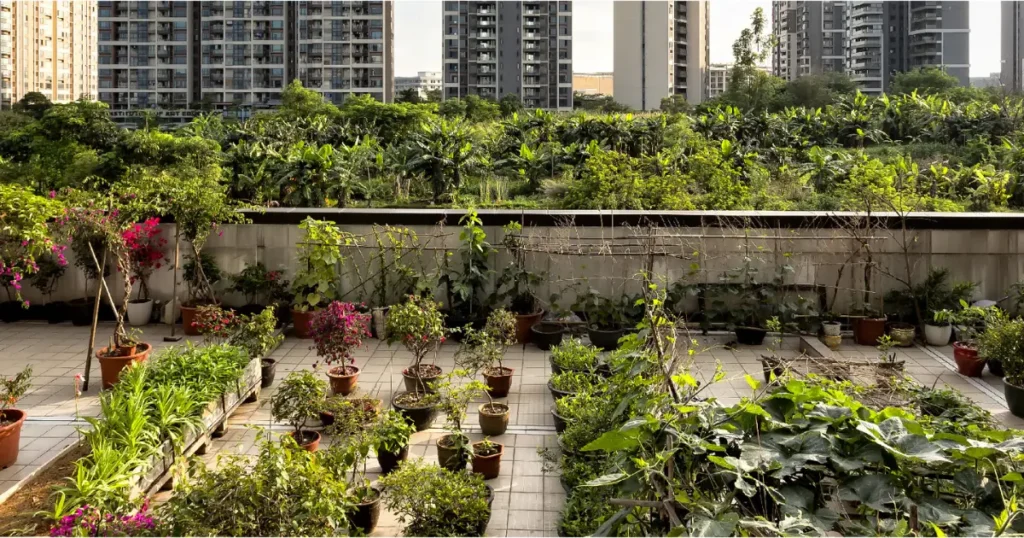Hydroponic Gardens: Can Apartments Thrive Indoors?
Table of Contents
ToggleIntroduction
Living in an apartment often means limited outdoor space, making traditional gardening a challenge. However, the rise of hydroponic gardens has transformed the way urban dwellers can grow fresh produce right inside their homes. But can apartments truly accommodate a thriving hydroponic garden? The answer is a resounding yes! With the right setup, knowledge, and care, hydroponic gardening can flourish in small spaces, providing fresh herbs, vegetables, and even fruits all year round.
What is a Hydroponic Garden?
A hydroponic garden is a soil-free growing system that uses nutrient-rich water to nourish plants. Instead of relying on traditional soil-based cultivation, hydroponic systems supply essential nutrients directly to the plant roots, resulting in faster growth and higher yields. This innovative method is ideal for apartment dwellers because it requires minimal space, reduces water usage, and eliminates soil-related pests.
Why Are Hydroponic Gardens Perfect for Apartments?
Space Efficiency
.
Unlike traditional gardening, hydroponic systems can be stacked vertically, making them ideal for small apartments. Systems like tower gardens and wall-mounted hydroponic setups allow residents to grow a variety of plants without sacrificing floor space.
Water Conservation
.
Hydroponic gardens use up to 90% less water compared to soil-based gardening. Since the water in these systems is continuously recycled, it minimizes waste and provides an eco-friendly alternative to traditional gardening.
Year-Round Gardening
.
With hydroponics, seasonal changes don’t affect plant growth. By controlling light, temperature, and nutrients, apartment dwellers can enjoy fresh produce throughout the year without worrying about outdoor weather conditions.
No Soil, No Mess
.
One of the biggest challenges of apartment gardening is dealing with soil-related messes. Hydroponic systems eliminate this issue, providing a clean and efficient way to grow plants indoors.
Faster Growth & Higher Yields
.
Plants in hydroponic gardens grow 30-50% faster than those in traditional gardens because they receive direct access to nutrients and oxygen. This means apartment dwellers can enjoy fresh greens, herbs, and vegetables in a shorter time frame.
Types of Hydroponic Systems for Apartments
Deep Water Culture (DWC)
.
This simple system involves suspending plant roots in oxygenated nutrient-rich water. It’s easy to maintain and perfect for beginners.
Nutrient Film Technique (NFT)
.
In this system, a thin film of water flows continuously over plant roots, delivering essential nutrients efficiently.
Aeroponics
.
This advanced technique uses mist to deliver nutrients to plant roots, requiring less water while promoting rapid growth.
Wick System
.
A passive hydroponic setup that requires no pumps or electricity, making it ideal for small apartments
Ebb and Flow (Flood and Drain)
.
This system periodically floods plant roots with nutrients before draining, ensuring efficient nutrient uptake.
How to Set Up a Hydroponic Garden in an Apartment
Choose the Right System
.
Depending on space and budget, select a hydroponic setup that suits your needs.
Select the Right Plants
.
Leafy greens (lettuce, spinach, kale), herbs (basil, mint, cilantro), and compact vegetables (cherry tomatoes, peppers) thrive in hydroponic systems.
Set Up Proper Lighting
.
Since apartments lack natural sunlight, LED grow lights can provide the necessary spectrum for plant growth.
Monitor pH and Nutrient Levels
.
Keeping an eye on water pH (between 5.5 and 6.5) and nutrient concentrations ensures optimal plant health.
Ensure Proper Air Circulation
.
Good airflow prevents mold growth and keeps plants healthy.
Common Challenges and Solutions
- Limited Space: Opt for vertical or wall-mounted hydroponic gardens to maximize available space.
- Insufficient Natural Light: Invest in full-spectrum LED grow lights.
- Maintaining Nutrient Balance: Regularly check water nutrient levels and adjust as needed.
- Humidity Issues: Use a small fan or dehumidifier to maintain proper moisture levels.
-
Bacteria: The Remarkable Role of Microbes for Growing Plants in Hydroponics
-
Hydroponics: The Rookie Mistakes of Growing Plants
-
Chlorine: The Incredible Key to Thriving Hydroponic Plants
-
Molybdenum: Astonishing Importance for Hydroponic Plant Growth
-
Boron: The Astonishing Importance for Plants Growing in Hydroponics
-
Copper: A Powerful Element for Hydroponic Plant Growth
-
Zinc: The Powerful Secret to Hydroponic Plant Growth
-
Manganese: Essential role for Hydroponic Plant Growth
-
Iron: The Crucial Role of Iron in Hydroponic Plant Growth
-
Sulfur: The Vital Key to Thriving Hydroponic Plant Growth
-
Magnesium: The Crucial Role for Thriving Hydroponic Plants
-
Calcium: The Critical Importance for Thriving Hydroponic Plants
Conclusion: Is Hydroponic Ginger Farming Worth It?
Hydroponic gardens are a game-changer for apartment living, allowing residents to enjoy homegrown produce without needing a backyard. By choosing the right system, selecting appropriate plants, and maintaining optimal growing conditions, apartment dwellers can cultivate a thriving indoor garden. With benefits like space efficiency, water conservation, and year-round growth, hydroponics is the future of urban gardening. So, whether you’re a gardening enthusiast or a beginner, it’s time to embrace hydroponics and turn your apartment into a green oasis!

